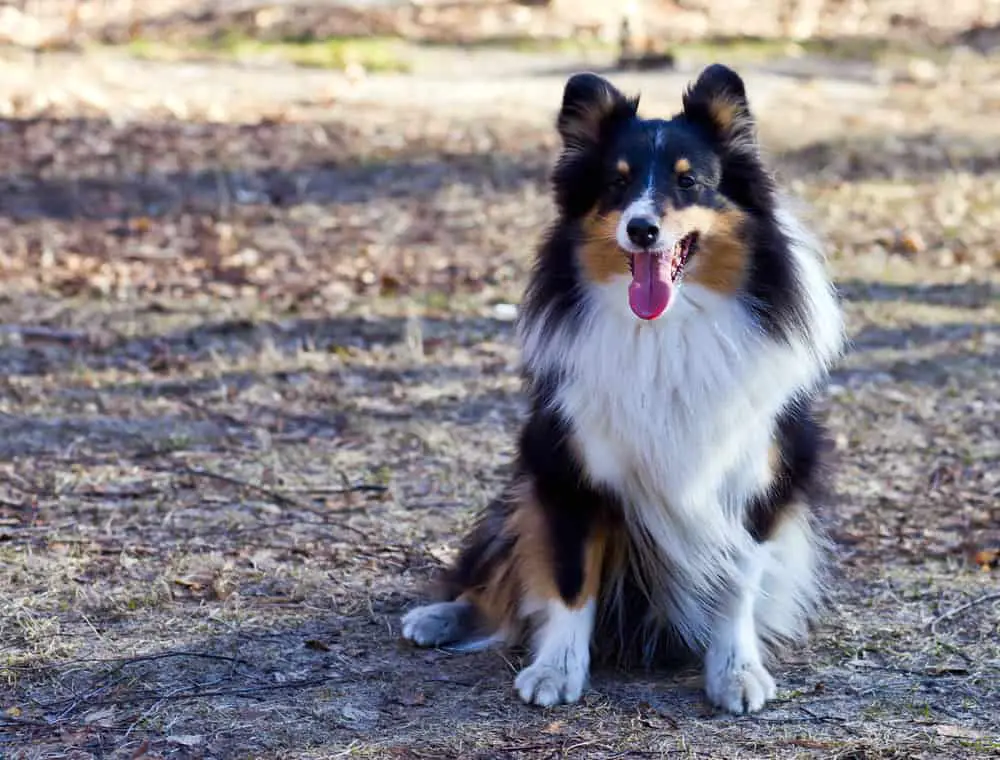Border Collie German Shepherd Hybrid Mix Dog Cross Breed Guide – Shollie
Today, there are numerous dog breeds; both experienced and beginning dog parents have work to do when choosing what to get for the family. Every breed has unique traits and requirements. While you may find some dogs easy to live with and even great to have around, others may not work for you.
There is plenty to love about the German Shepherd and Border Collie dogs. They are easy-going, friendly, and love to be around people; you may know them for their intelligence, aptness, and gentle nature. If you do not own one of them already, you may consider a starting point; alternatively, you can get a Shollie.
Shollies arise from the combination of a German Shepherd and a Border Collie. Unlike breeds whose outcome can be hard to predict, Shollies often turn out to possess both their parents’ traits and looks. Therefore, caring for them requires little extra attention and will call for every dog owner’s patience.
Since the GSD and Collie have working histories with their first parents serving herding purposes, most people keep these pooches for work, simple aid, a majority of families keep them for companionship. Their energies suit them, so do their athleticism and agility; their protectiveness and playfulness also make them ideal for many homes.
How do Shollies look like? How do you care for one? What about their training? Are they prone to illnesses? These, among more, are questions that we will attempt to address in this article. Let us begin by looking into the history of each of the two.
History
Over the years, Shollies have risen in popularity among breeders, families, and individuals who love dogs as a designer breed. The mix achieves a beautiful and easily lovable pooch; it is often playful, athletic, and strong as both parents are and protective. Many dogs grow attached to their owners and families; the Shollie is not an exception.
Unlike the German Shepherd, the American Kennel Club has not officially recognized Shollies. Nevertheless, they have had their place with the ACHC (the American Canine Hybrid Club) and the DRA (the Dog Registry of America).
The German Shepherd, nevertheless, has an independent history from the Border Collie. To understand how the mix comes about, why don’t we take a quick trip down memory lane?
German Shepherd
This pooch traces its history to the 19th century, when it first served messenger purposes, as a sentry, and as a rescuer during the world wars. It has since served various purposes and, in 1908, received official recognition from the American Kennel Club.
Max Von Stephanitz was a German cavalry officer in the 19th century. He established the first German Shepherd breed as he desired an intelligent, agile, herding dog. Today, the German Shepherd is one of the most intelligent breeds; they are also energetic and strong.
That is not all to this beautiful pooch; most people also love the GSD for its friendly nature–children love them as much as they reciprocate. Besides its place in homes, this breed has also caught the military and law enforcement’s eyes and hearts with its smartness and aptness.
Border Collie
This pooch traces its history to the Scotland-England border, and most people know them as early sheepdogs for their Scottish-Gaelic name, Collie. Therefore, like the former, this breed was first used as workers–they would herd cattle and sheep along the borders, which is also where they got their first name.
Nevertheless, Great Britain has more to the dog’s history than the borders. Roman occupants in the region came upon Viking traders, mingling the latter’s Spitzes with the large Roman herd dogs. Therefore, this part of their history roots to the first interbreeding that gave rise to the Border Collie.
By the 1800s, many dog owners already had some Border Collies, helping out with something or joining in on work. Their efficiency did not slip Queen Victoria, who was fascinated by the dogs. However, it took longer for its recognition as a breed; it was in 1995 that the American Kennel Club took notice.
Today, we know Border Collies as some of the smartest dogs. Their intelligence makes them apt learners; they are also alert, energetic, and hardworking—their roles as working dogs and suited their interbreeding purpose. Over the years, we have not stopped trying out more possible and efficient mixes.
Appearance
A Shollie shares the looks of the German Shepherd for a part, those of the Border Collie in other parts, and a combination of the breeds’ features and characteristics. This mix will often behave like its two parents and requires similar care. Generally, it is unique from most breeds.
Thanks to its parents’ body sizes, a Shollie comes large and muscular; the dog is also athletic, friendly, and you may find it easily lovable. Its physical appearance suits this pooch for work, but many parents today keep them for companionship and simple aids. The mix’s behavior has won it more love and popularity.
Their physical features begin sets of friendly eyes that can be a variety of brown, hazel, blue, or amber; you may love their almond shape or how their colored eyebrows give an impression of intelligence. You will perhaps find these dogs even friendlier for their slightly floppy ears.
Their coats are another identifying feature; however, here, you will notice that the Shollie balances the characteristics it acquires from either parent. You will notice it with their coat density and color, besides the tail appearance.
The German Shepherd and Border Collie have double coats, which can look dense; like its parents, the Shollie has a silky smooth and double coat. The mix has a unique tail from the GSD–less bushy. Nevertheless, Shollies do not stray far from the GSD; their coat colors have more to say.
While you would expect a combination of colors or a solid distinction, Shollies turn out with the German Shepherd’s common color. Therefore, most will look tan. Is it possible to come across bi-colored mixes? It is; some Shollies, albeit rare, come white–a combination of the two breeds.
Size
You may be concerned with how big these dogs grow. Depending on your available space, you may face a challenge living with large dogs with high energy or exercise requirements. They often need enough room to move about and play. We will look into living with a Shollie; first, why don’t we discuss their average sizes?
A medium-sized Shollie would be a great fit for most homes; however, they can get large and range in weight from 45 to 80 lbs, growing to an average of 22 to 29 inches. That is between 20 and 36 kgs in weight and, on average, 56 to 74 cm in height.
Male German Shepherd Border Collies tend to be larger than the females. Therefore, the former often grow to between 27 to 29 inches, while the latter range between 22 and 25 inches. On average, that is 69 to 74 cm for males and 56 to 64 cm for females.
German Shepherd Collie Mix
Are you wondering if this dog could be a perfect match for your family? It would be best if you worried little about trouble with the Shollie. The dog is not self-driven and intelligent but can also make a great companion; you will love its affectionate nature; the Shollie’s need for attention also brings it closer to the family.
Due to their high energy and spirits, these dogs also tend to get playful; they do well in active and outgoing families but are also happy around loving people with work to do or desire to have fun. They additionally relate well with children and other pets over time, establishing friendships and connections.
While they are easily lovable and give as much love, these pooches can get wary around strangeness, owing to their protective nature. It may also not be a good idea to leave them alone with children; their large sizes, high energy, and great strength make it necessary to watch or supervise their interactions.
Shollies are amazing dogs. Since they are intelligent and thus fast learners, it would be best to train them from an early age to behave well around children, strangers, and pets. Expose your pooch whenever you can so that they can familiarize themselves with their surroundings and drop their guards.
Their energies and intelligence make it necessary to train these dogs regularly. They also have muscular, large bodies that need to get worked up daily to remain fit and in ultimately good health. Generally, you will love the Shollie.
Barking
If you live in an apartment, you perhaps would worry about any disturbance your dog’s barking could cause. A Shollie does not bark anyhow. It often does whenever it notices anything out of the ordinary or to warn of a threat. As we have noted, they are protective and alert.
Therefore, they would make suitable companions in a variety of environments, an apartment included. If you expect visitors often, then you may want to train your pooch to set a line between friendly and unwelcome guests; otherwise, their nature can give you trouble.
Activity
Shollies do well in outdoor families. Their high energies can get out of hand if not put to good use by stimulation or exercise. Therefore, it is a good idea, whenever possible, to take your pooch out for a walk. For good development, you can consider two walks every day of at least an hour each.
Every week, ensure that you have taken a substantial number of walks. As we have noted, physical exercise and stimulation help keep their behaviors in check and convert their high energies and strength to good. If you can manage to take your Shollie swimming, then they could do better and be happier.
Their high intelligence suits these dogs for mind games and exercises that can help with mental development; therefore, catching frisbees or playing fetch could be an interactive way to spend time with and stimulate them. Do not let your Shollie end a day bored.
Try out new stuff, canine stuff, and even herding stuff! Agility sports are good for them; you can also try flyballs, herding, and obedience trials. Set an off-leash date for your pooch’s interaction in public places or the wild with other dogs and pets. Let them be free and have fun.
Training
You may find training the German Shepherd Collie to be easy, thanks to its aptness and intelligence; with proper training, this dog will take instructions quickly and learn to be obedient. Shollies tend to be independent. However, like intelligent dog breeds, a little patience will do.
Within a short time, you should have a pooch that can take commands, barks only when necessary, and relates well to friendly strangers and other family members, pets included. What do you do when they need correction? Positive reinforcement is the best way for these dogs.
Health concerns
Shollies are not prone to illness. However, they can inherit or develop a few complications, including:
- Hip dysplasia.
- Bloat.
- Deafness.
- Degenerative myelopathy.
- Epilepsy.
- Collie eye anomaly (CEA).
- Allergies.
- Osteochondritis dissecans (OCD).
- Exocrine pancreatic insufficiency.
A dog’s life expectancy is affected by myriad factors. Nevertheless, care makes a huge determination. While Shollies can live for an average of 10 to 15 years, proper care and a healthy lifestyle (including ideal nutrition and sufficient exercise) can get them to 17 years.
Bottom Line
Shollies are adorable, playful, energetic, and protective dogs. There is plenty to love about them; we have scratched only the surface of what beauty there is in having one. They do well in active and outdoor families; their high energies require enough room for movement and plays.
Where can you get a German Shepherd Collie, and for how much? You can rescue one for $175 to $200 on adoption. Alternatively, you can get a puppy from a breeder for $475 to $1,000. I hope you find the right Shollie for your home! You may want to reconsider them if you are allergic to dander.





